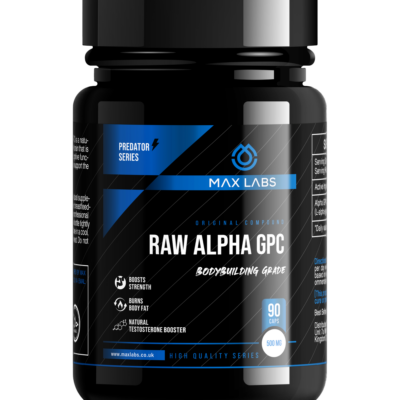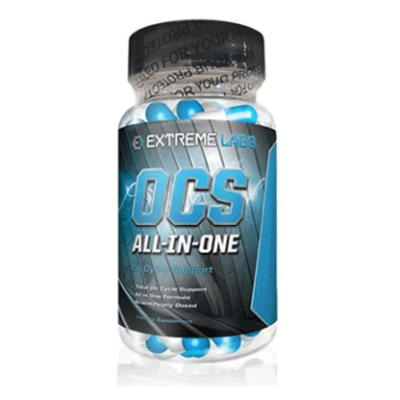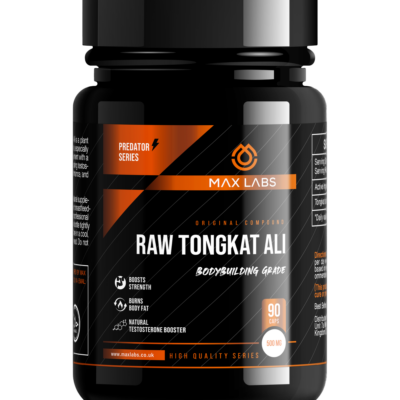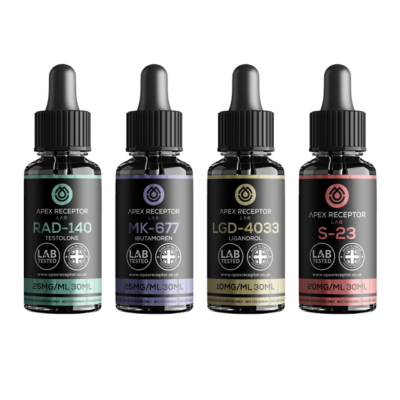If you’re into fitness, you’ll know that every time you open up social media, you’ll see giant guys deadlifting cars, protein powder ads, and professional athletes talking about their lifting routines.
These muscle building tips could set you up for months of workouts, and you could build your biceps, bulk up your back, or torch your triceps. But a one-size-fits-all guide to healthy living and staying active doesn’t exist. Ultimately, the best workout routine is one you can stick to.
If you’re looking at how to gain muscle mass efficiently, this guide will examine the top 10 muscle building tips you should commit to when trying to bulk up.
Muscle Building: Why Is It Good for You?
Muscles do more than increase strength for your body.
Sure, there’s a high that comes with finding the perfect workout routine to build muscle, but the benefits go much deeper…
Muscles Burn More Calories
Increased muscle mass also increases your metabolism, which means you burn more calories at rest in a day, although the difference is not as great as many assume.
There are about 13 calories burned by a pound of muscle a day, compared to about four calories burned by a pound of fat tissue. Bulking, however, may result in you needing more food than this gap reflects.
However, if you gain muscle, you exercise more frequently and burn more calories throughout the day.
Muscles Offer Joint Support
Your muscles support your joints. They absorb the impact when you run, jump, and even walk. The more muscle you have, the more force you absorb, protecting your joints. You also rely on your muscles to move your joints.
When your muscles aren’t strong enough, your joints can’t handle the impact, causing tears and breaks. With this kind of support, you can balance better, preventing accidents.
Bones Are Strengthened by Muscle
We grow our bones by putting extra pressure on them. Squatting with a barbell or pressing a kettlebell overhead strengthens the bones.
As we age, bone density becomes increasingly important. In osteoporosis, bone mass gradually decreases as we age, making them more fragile and thus more susceptible to breaking.
Muscle Makes You Look Good
Adding muscle mass to your frame has obvious physical benefits.
You’ll feel more confident, your clothes will fit better, and some people will think you’re more attractive. These are all big reasons guys spend hours pumping iron to achieve gains in the gym.
Make your physical appearance a reason to hit the gym – you’ll still get all the benefits.
There are many reasons to focus on muscle building, but it’s more than just going to the gym and lifting weights.
To grow muscles effectively, you have to plan. As your muscles recover and grow stronger, you can build muscle. For them to recover effectively, you need to create the right environment outside the gym.
Your quest to build muscle involves several variables over 24 hours. Pushing your muscles to the limit in the gym counts. Rest, nutrition, and active recovery are all part of the “work” you do when you are not at the gym.
What is Muscle Hypertrophy?
Before we jump into the fundamentals of building muscle, let’s take a quick look at what muscle growth entails from a scientific perspective.
Building muscle involves overloading with heavy weights to damage muscle tissue. As a result, your body repairs itself, building bigger and stronger muscles than before. This makes it easier for you to do it in the future.
Muscle hypertrophy is generally responsible for muscle growth. Essentially, hypertrophy is the development of new cells in response to stress.
Your muscles grow as your body adapts to the workloads you put on it. Muscle cells grow, making them better able to handle heavy weights, resulting in growth.
The 10 Fundamentals of Building Muscle
Now we understand the why; let’s dig into the how!
1. Muscle Pairing
Muscles can be built in loads of different ways.
You need to tailor your workouts to your abilities to get the best results. For every muscle group, there is a variety of exercises and variations. Finding the proper workout can be challenging.
Muscle pairings that support one another are the most common in the gym. In most pulling motions, your back and biceps are responsible, and your chest, triceps, and shoulders are responsible for pushing motions. Putting the larger muscle first means you can fatigue it before the smaller one stops working, so they should be trained together.
Even with these pairings, there are different ways to target each muscle group. Within strength training, compound and isolation exercises are typically the most effective.
Compound exercises are generally better. It’s a great way to build real, functional strength while hitting a bunch of different muscles at once.
Isolation exercises, on the other hand, are totally different. These workouts focus on just one muscle, so you get a more specific development. It might sound bad, but it means you can focus on your weaker or underdeveloped areas and get in great shape.
2. Muscle Building Food
Maintaining lean muscle requires nutrition and physical activity. Physical activity is essential to challenge your body, but proper nutrition will boost your progress. So, what are the best food for muscle building?
Gaining muscle requires high-protein foods, but carbohydrates and fats are also important. You should exercise regularly and eat more muscle-building foods if your goal is to gain lean muscle.
Aside from providing high-quality protein and healthy fats, eggs also contain B vitamins and choline, which are important nutrients. For muscle growth, eggs contain large amounts of leucine, an amino acid. All these are essential for a muscle-building diet.
You can also eat salmon for your meals to build muscle.
Every 3-ounce (85-gram) serving of salmon contains 17 grams of protein, 1.5 grams of omega-3 fatty acids, and several essential B vitamins. Muscle health and muscle gain during exercise programs may benefit from omega-3 fatty acids.
3. Muscle Building Workout Plan
Putting on muscle requires more than biceps curls, you need a workout plan to build your muscles.. The key is to work through so-called “multi-joint” movements.
Do multi-joint and multi-muscle exercises. Consider a dumbbell row, for instance. Each row rep challenges the biceps, lats, and abs. Using multiple muscle groups, you can lift more weight, stimulating growth. Just like in real life, it forces you to use muscles together.
Include squats, deadlifts, pullups, and bench presses to reap the benefits. To grow, you want to stimulate multiple muscle groups at once.
4. Up Your Weights
Muscles are challenged both concentrically and eccentrically during heavy training; this is where strength and muscle are built.
Feel free to do sets of five reps for multi-joint moves like squats, bench presses, and deadlifts. For single-joint movements, you can do sets of 10 reps, as well as high-rep sets. By using more weight, you’ll be able to build more pure strength. As your strength grows, you’ll be able to lift heavier weights for longer periods.
Start every workout with an exercise that allows you to train low-reps. For your first exercise, do four sets of 3-5 reps, then three sets of 10-12 reps.
5. Hydrate
According to a 2001 study at the University of Texas, lifters who drank an amino acid-and-carb shake before exercising produced more protein than those who drank the same shake afterwards.
Six grams of essential amino acids, the building blocks of muscle, were contained in the shake, along with 35 grams of carbohydrates. You may be able to absorb more amino acids if you drink a carbohydrate-protein mixture before your workout since exercise increases blood flow to your muscles.
For your shake, you’ll need about 10 to 20 grams of protein-usually one scoop of whey protein powder. Want to avoid protein drinks? Sandwiches with 4 ounces of deli turkey and a slice of American cheese on whole wheat bread provide the same nutrients. Drinks are better, though.
Drink 30 to 60 minutes before your workout.
7. Days Off Are Your Friend
Moving your body every day is essential, but your workouts should be manageable and not leave you feeling absolutely exhausted. Training hard every day prevents your body from growing, so plan in time for rest and recovery.
Limit your weight room workouts to 12-16 total sets. Now and then, you can still take on a brutal workout, but don’t do back-to-back workouts that push your body beyond its limits. The recovery you need to grow muscles will be counterproductive if you constantly train to exhaustion.
7. Train With Muscle Bulking Supplements
Selective androgen receptor modulators (SARMs) were initially used for medical purposes but are now commonly used by bodybuilders to build lean muscle mass.
The popularity of SARMs for this purpose throughout Britain, Europe and the US can be explained by their astonishing results combined with little to no adverse side effects compared to steroids for muscle growth.
Aside from building muscle, SARMs can also burn body fat to varying extents, depending on the SARM.
Andarine (S4) is similar to the anabolic compound Stanazole, but it protects muscles better and produces lean muscle mass. It doesn’t dry joints, stress the liver, or cause severe suppression.
Aside from the muscle-building effect, Andarine can also reduce body fat.
Combined, muscle increase and fat-burning effects make Andarine great for training with reduced calorie intake.
The SARM YK-11 binds to myostatin, allowing you to build muscle mass beyond your genetic potential. YK-11 has effects close to testosterone but doesn’t exhibit its side effects. Because it inhibits myostatin, YK-11 is among the most advanced SARMs available.
You can use SARMs in several muscle building stacks to boost performance and bulk up quickly.
8. Progressive Overload
Pushing your muscles to handle progressively more challenges is a crucial muscle-building element.
Most gym-goers believe that you should lift heavier during every workout. There’s no truth to that. Instead of adding weight to every set of exercises, work to improve on every set of exercises. Even if you’re not gaining weight, you can push yourself in different ways.
Sometimes, that means using the same weight for all four sets daily. Progressive overload can take other forms as well. You can decrease the rest time between sets, say, from 120 seconds to 90 seconds, or do more repetitions or sets.
Aim to improve every workout, but know that improvement will sometimes look different.
9. “Time Under Tension”
One way to grow your muscles gradually is to give them more “time under tension”.
You’re under “tension” when you work your muscles under a bench press bar or curling a dumbbell upwards. Your biceps are not under tension when you stand with dumbbells at your sides. Curling them upwards will cause them to flex against the “tension” of the dumbbells.
This tension is often used to the advantage of experienced lifters. They lift a weight with a specific tempo (on that biceps curl) instead of simply raising and lowering it. During every rep, they might curl up as fast as they can and then lower the weight for 3 focused seconds with good form.
This keeps your muscles under tension for longer than a typical set where you lift and lower the weight without specific timing. The extra time under tension during a set can spur muscle growth.
It doesn’t work for explosive exercises such as kettlebell swings, snatches, or cleaning. But squats, deadlifts, curls, pullups and pushups (and many other exercises) can be modified to increase the time your muscles spend under tension.
10. Sleep
When it comes to building muscle, sleep is often overlooked.
When you’re asleep, your muscles recover, and your body grows, but you don’t realise it when you’re training. Hormones that promote muscle growth are also released during this time.
The ideal amount of sleep is 8 to 10 hours. If you can’t make it to 8 hours, you should make the most of your time to maximise quality.
Consider your sleep setup if you’re serious about building muscle. Try to get up and go to bed at the same time every day. Sleep in a cool, dark room. These little things can make a big difference to your ability to build muscle.
Change to Muscle Building Supplements: SARMs
The muscle building tips above should set you well on your way to bulking up, but if you need help, SARMs are the supplement for you. SARMs’ Hardcore Stack for Mass Bulking can build lean muscle mass, reduce fat mass, and are much safer than steroids for muscle growth.
Remember that the SARMs mentioned above aren’t suitable for those who want only to lose fat. Not everybody may need to boost their muscle-building abilities. Fortunately, there are other SARMs specifically designed to reduce fat without a significant muscle mass increase.
As the number one UK SARMs supplier, our prices are highly competitive, and we offer bulk discounts for large purchases.
You can also buy SARM stacks to lose fat or bulk up. Along with enhanced effects, these stacks are pocket-friendly.
Take advantage of SARMs today and quickly see the difference in your muscle tone and physique.
Happy bulking!







